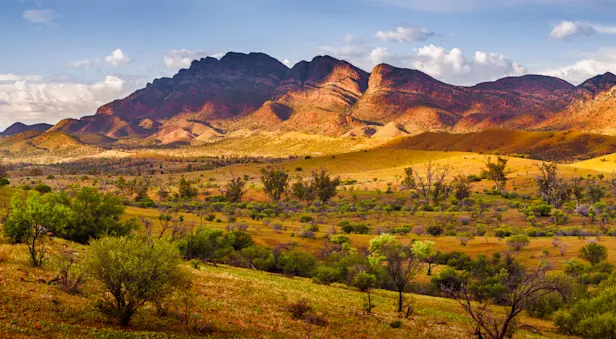Weather & Climate in Australia
Australia North: Kakadu, Kimberley & the Outback
June through August is Australian winter, meaning temperatures at this time of the year are the coolest. However, this is the Outback—it can still be very hot!
Kakadu and the Kimberley are hot during the day. While it is also warm in Uluru during the day, it is far more pleasant than up north. Uluru can get cold at night and early morning when temperatures drop, so make sure to bring a warm layer.
June through August is the best time of year to avoid flies, which are least annoying during the cooler months. Uluru has flies year-round, so keep insect repellent handy.
The Outback in the Australian Winter, when we visit, is a popular time to visit. Nat Hab Expedition Leaders do everything possible to avoid crowds, but at some sites such as Uluru, they may be unavoidable.
Australia South & Ultimate Australia Safari
The coastal areas of South Australia have a Mediterranean climate with four distinct seasons. Our trips run in Australia’s spring and fall when the weather is mild and pleasant. In general, it is hotter to the north, as you approach the equator, and cooler further south, such as on Kangaroo Island, where we will likely experience very comfortable temperatures.
Tasmania has a temperate maritime climate with temperatures varying very little throughout the year. However, rainfall amounts vary dramatically across the island, and the weather can change very quickly. Weather conditions are especially unpredictable in the cool, wet alpine environment of Cradle Mountain, where snow is possible at any time of year.
The northern part of Australia is more tropical than the south due to its location closer to the equator. On our October–December departures, northern Australia tends to be warm and sunny. In late February and March, the weather is generally warm and humid with some rainy days. The rain supports the lush vegetation in the Daintree Rainforest, but even at the rainiest times, precipitation tends to be limited to exciting afternoon or evening thunderstorms.
Lady Elliot Island has a balmy, sub-tropical climate characterized by plenty of sunshine and gentle ocean breezes. February and March can bring tropical rain and thunderstorms, but these typically pass through quickly.
The Ikara-Flinders Ranges region has a semi-arid climate, with very hot summers and cool, dry winters. This area receives an average of less than 10 inches of rainfall each year. The weather during our time in the Flinders Ranges is likely to be hot and clear, with minimal rain.
Adelaide

Kangaroo Island

Cradle Mountain, Tasmania

Hobart, Tasmania

Brisbane

Ikara-Flinders Ranges

Cairns

Venture Across Australia

Australia South: Tasmania, Kangaroo Island & the Great Ocean Road
Discover the diverse landscapes and ecology of far-south Australia as we explore four national parks and a host of private nature reserves teeming with endemic and endangered wildlife.

























